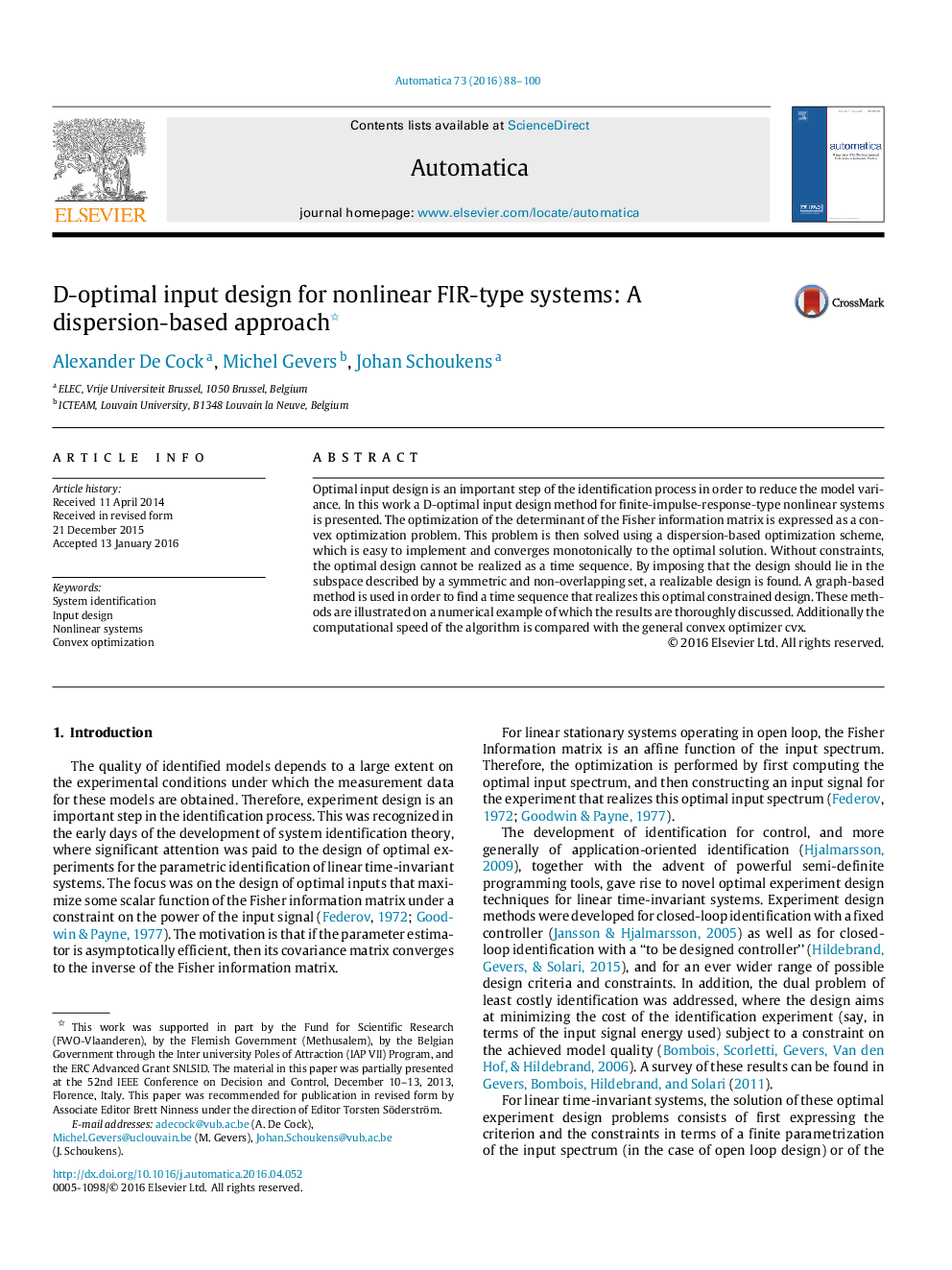| Article ID | Journal | Published Year | Pages | File Type |
|---|---|---|---|---|
| 4999924 | Automatica | 2016 | 13 Pages |
Abstract
Optimal input design is an important step of the identification process in order to reduce the model variance. In this work a D-optimal input design method for finite-impulse-response-type nonlinear systems is presented. The optimization of the determinant of the Fisher information matrix is expressed as a convex optimization problem. This problem is then solved using a dispersion-based optimization scheme, which is easy to implement and converges monotonically to the optimal solution. Without constraints, the optimal design cannot be realized as a time sequence. By imposing that the design should lie in the subspace described by a symmetric and non-overlapping set, a realizable design is found. A graph-based method is used in order to find a time sequence that realizes this optimal constrained design. These methods are illustrated on a numerical example of which the results are thoroughly discussed. Additionally the computational speed of the algorithm is compared with the general convex optimizer cvx.
Related Topics
Physical Sciences and Engineering
Engineering
Control and Systems Engineering
Authors
Alexander De Cock, Michel Gevers, Johan Schoukens,
